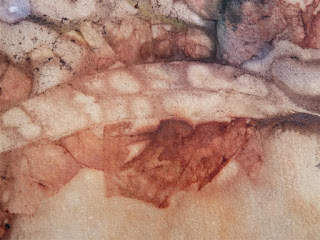Its been a week already since I returned from my NZ holiday....how time flies!
I just wanted to share with you the wonderful experience I had whilst in Whangarei, NZ - I spent a day with Janine, a flax weaving artist. She patiently taught me the basic skills of flax weaving, including collection and preparation of the fibre.
There are a number of Maori customs to be followed when collecting the fibre, including ensuring the sustainability of the plant itself when removing the leaves. The most interesting custom is that women shouldn't collect the flax during their menstrual period. (personally, I think we should expand that to include housework, cooking etc.....!)
As our weaving day progressed, Janine and I had a great chat about basketry in general. I got her started on coiling with daylilly leaves from her garden and then got her excited about random weaving. So the day ended up more as an exchange of information as well as working on our baskets.
At the end of the day, I had created a four corner basket with a folded edge and a two corner satchel with a plaited edge (see photos below). My only disappointment is that both baskets were confiscated by Australian Customs as they weren't quite dry and so had the potential to carry nasties (like rust disease). Luckily I had been prepared for that eventuality and had purchased some dry finished baskets by other artists (including Janine) during my trip.
At the airport, they were filming for the TV show 'Customs' but didn't come rushing over to film my flax baskets being taken - obviously I didn't make enough fuss! Or perhaps flax baskets don't rate as high as hidden drugs and fruit?
Anyway I would like to thank Janine for inviting me into her home and sharing her flax weaving knowledge - obviously much more complicated than my random weave baskets (more concentration required!). On the day we left Whangarei, I gave Janine a random weave basket that I had made overnight - I used palm inflorescence from the caravan park's palms - never an opportunity wasted!
Now all I need to do is find a NZ flax plant over here........!
 |
| my 4 corner basket |
 |
| my 2 corner basket/satchel - inside view |
 |
| Toasting my flax weaving success ! |



































